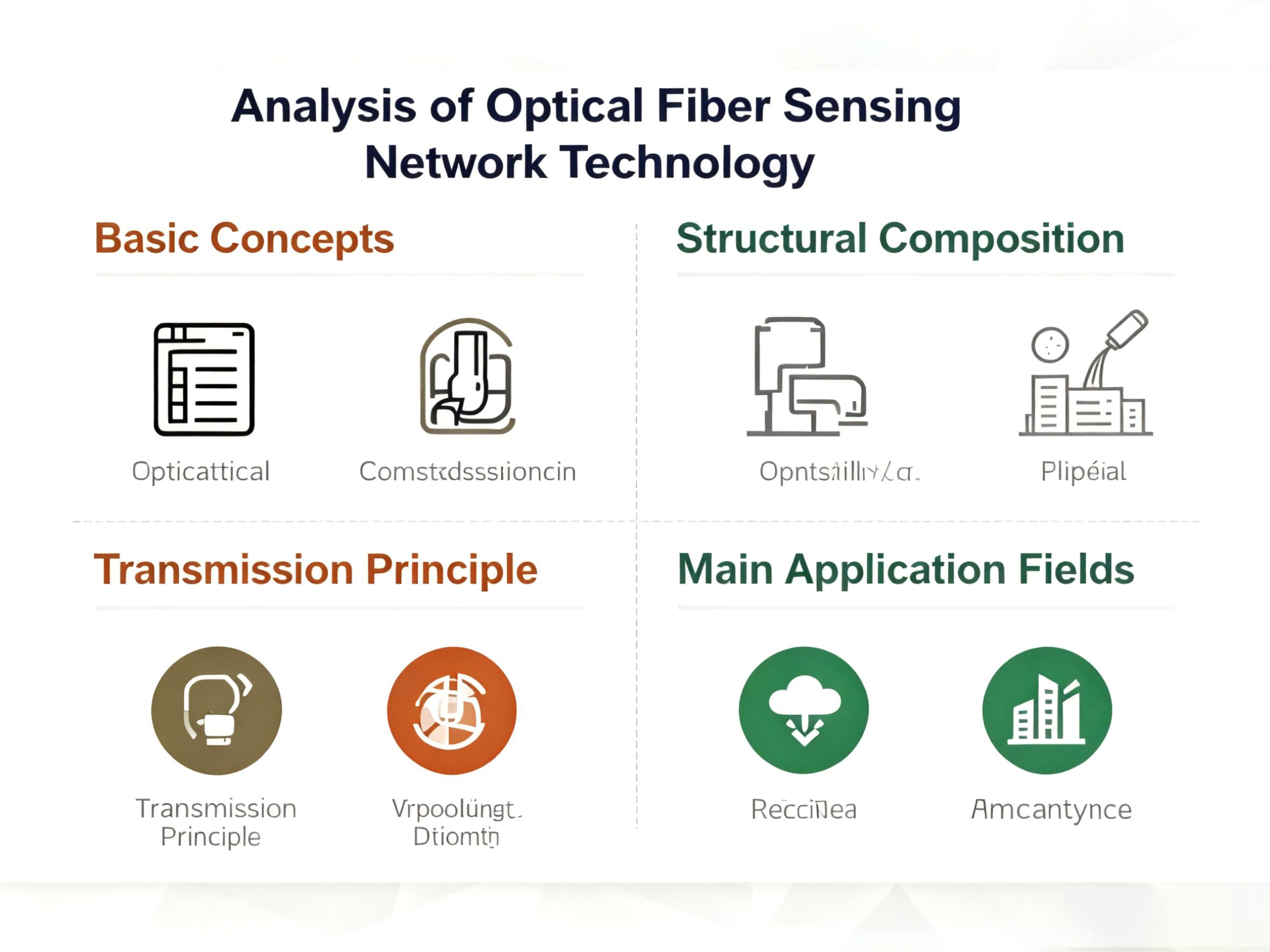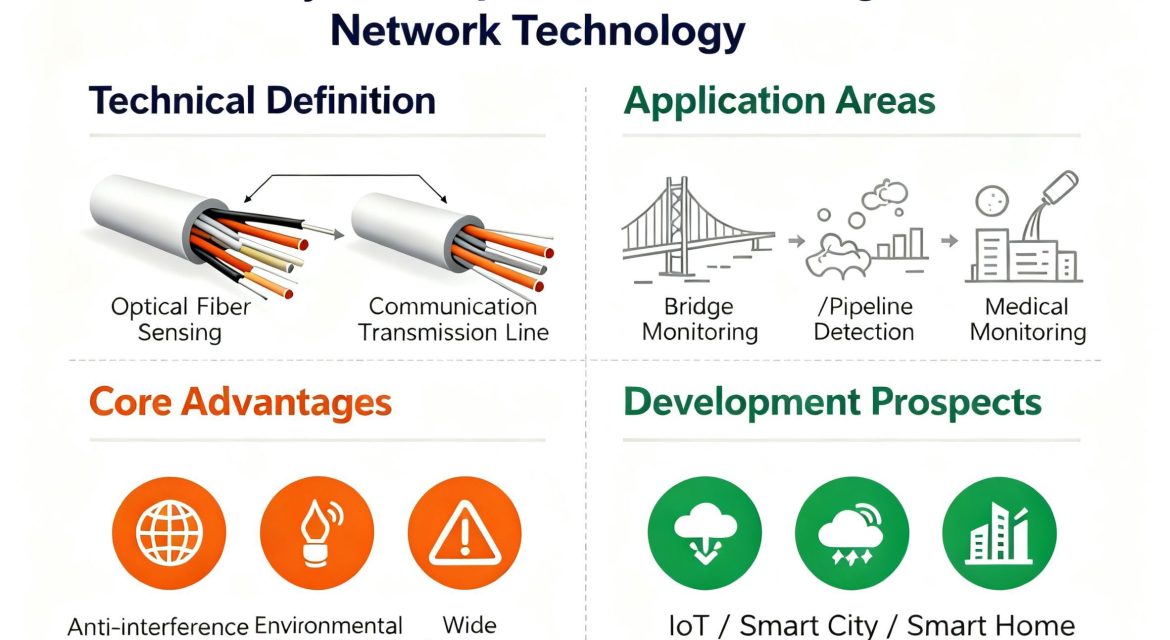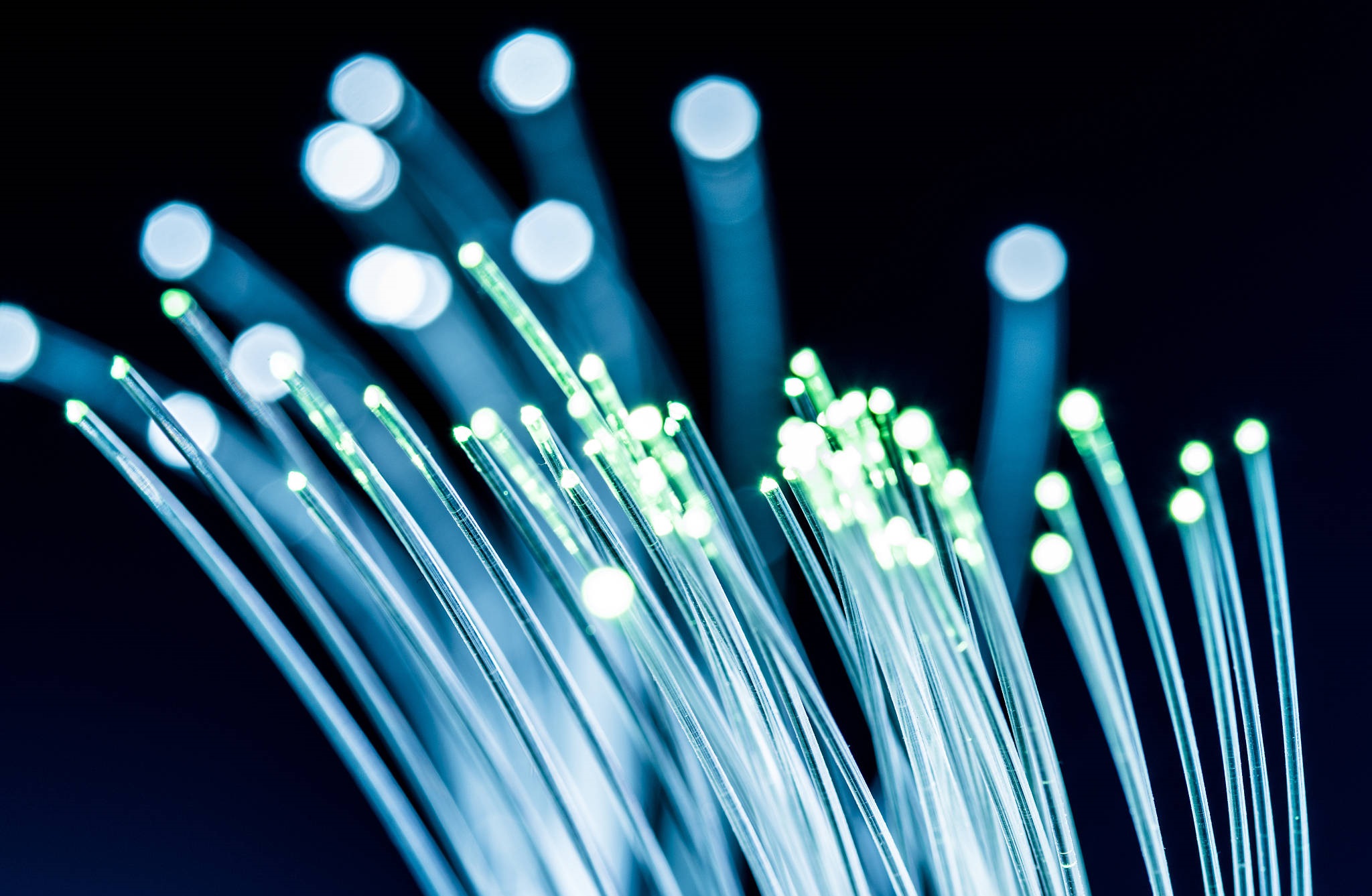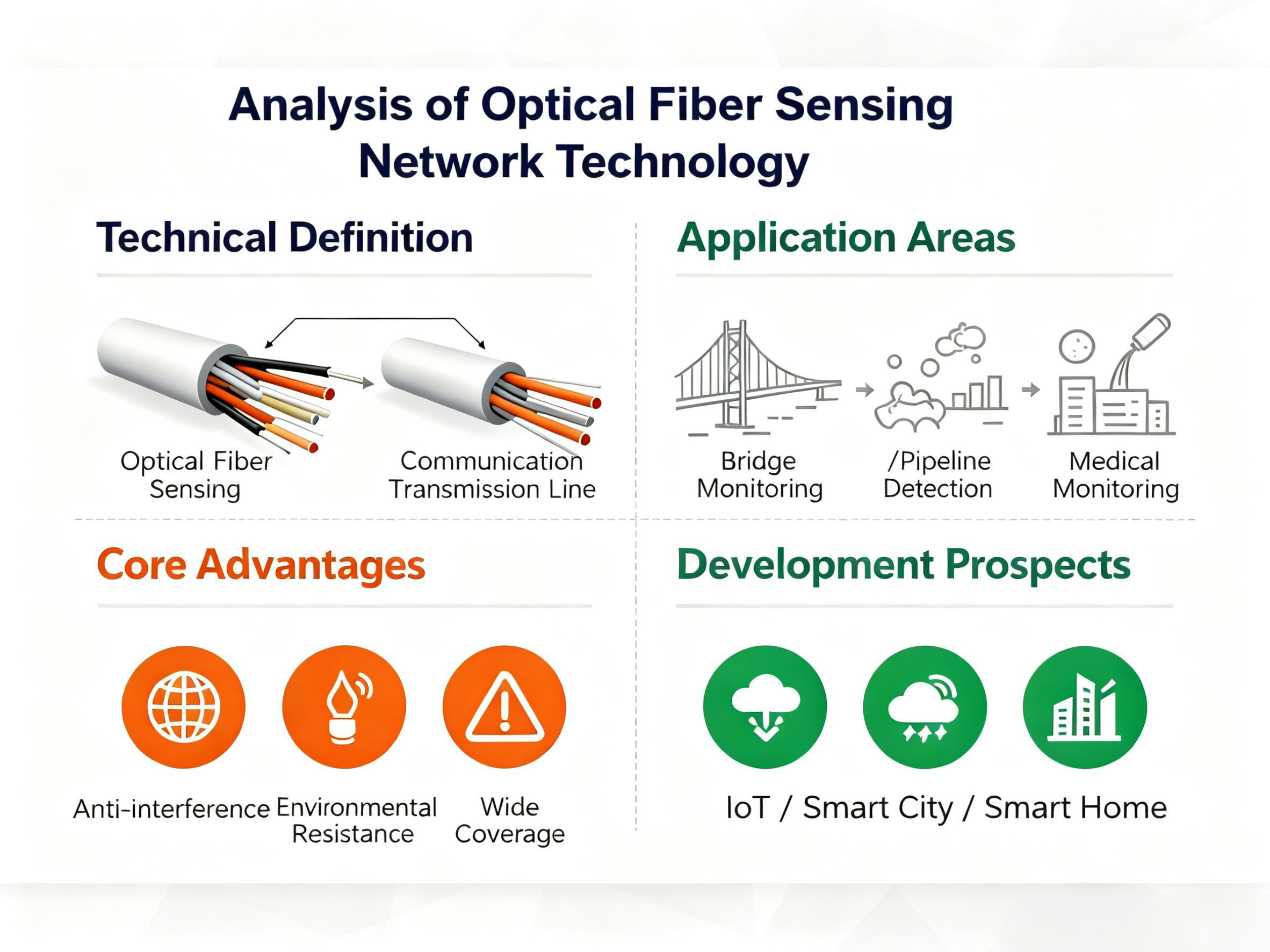Optical fiber sensor networks sound quite sophisticated, but in fact, they are not far from our daily lives. In simple terms, optical fiber sensor networks use optical fibers as sensors to monitor various physical quantities, such as temperature, pressure, vibration, and so on. It is somewhat similar to the optical fiber communication we use for surfing the Internet in our daily life, but not exactly the same. Communication optical fibers are used to transmit data, while sensing optical fibers are used to “perceive” the surrounding environment.

The most prominent feature of this technology is its strong anti-interference ability, its fearlessness in harsh environments, and the fact that a single optical fiber can cover a large area, saving time, effort and money. In the future, it may also be used in smart home, medical monitoring and other fields, making our lives smarter and safer. It can be said that optical fiber sensor networks are quietly changing the world, making invisible information within easy reach.
You may not know that optical fiber sensor networks have quietly permeated many fields. For instance, in large-scale projects such as Bridges and tunnels, optical fiber sensors can monitor the health status of the structure in real time. Once there is any abnormality, the system can issue an early warning to prevent accidents from happening. For instance, in oil pipelines, optical fiber sensors can detect minute leaks and prevent environmental pollution. Even in some medical devices, optical fiber sensors can be used to monitor physiological signals of the human body.
The reason why optical fiber sensor networks are so powerful is that they have many advantages. First of all, optical fibers themselves are very thin and soft, and can be easily deployed in various complex environments. Secondly, optical fiber sensing is not affected by electromagnetic interference and can operate stably in high-voltage and strong radiation environments. Most importantly, the coverage of optical fiber sensor networks is extensive. A single optical fiber can monitor an area of several kilometers or even tens of kilometers, which is highly efficient.
However, optical fiber sensor networks are not without flaws. For instance, its cost is relatively high, and both its deployment and maintenance require professional technical support. In addition, data processing is also a challenge because the amount of information collected by optical fiber sensors is extremely large. How to extract useful signals from it still requires more intelligent algorithms.
Overall, optical fiber sensor networks are a very promising technology. With the development of the Internet of Things and smart cities, its application scenarios will become increasingly extensive. Perhaps in the near future, every building, every road and even every device around us will be connected through optical fiber sensor networks, forming a smarter and safer world.





